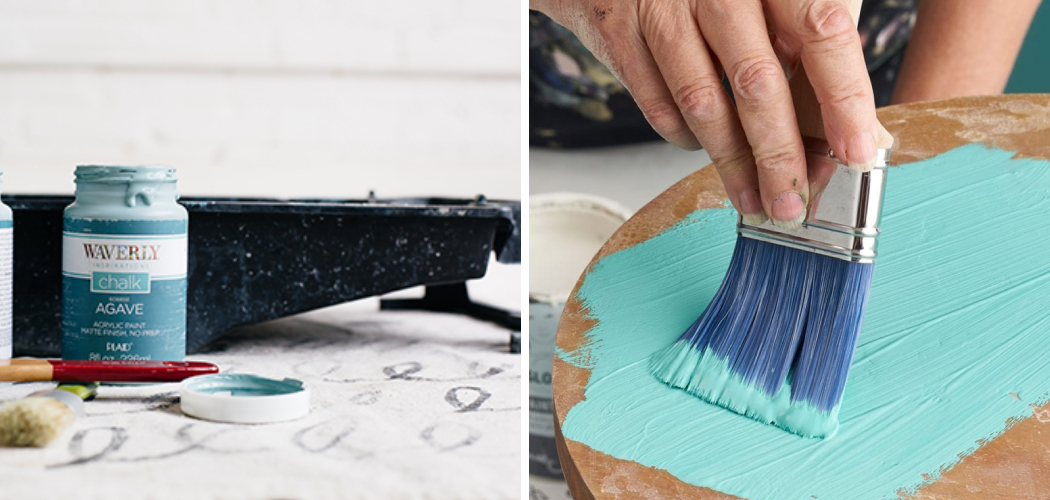Are you tired of having to repaint your furniture every year? Do you want a more durable and long-lasting finish for your painted pieces? Look no further than Waverly Clear Wax!
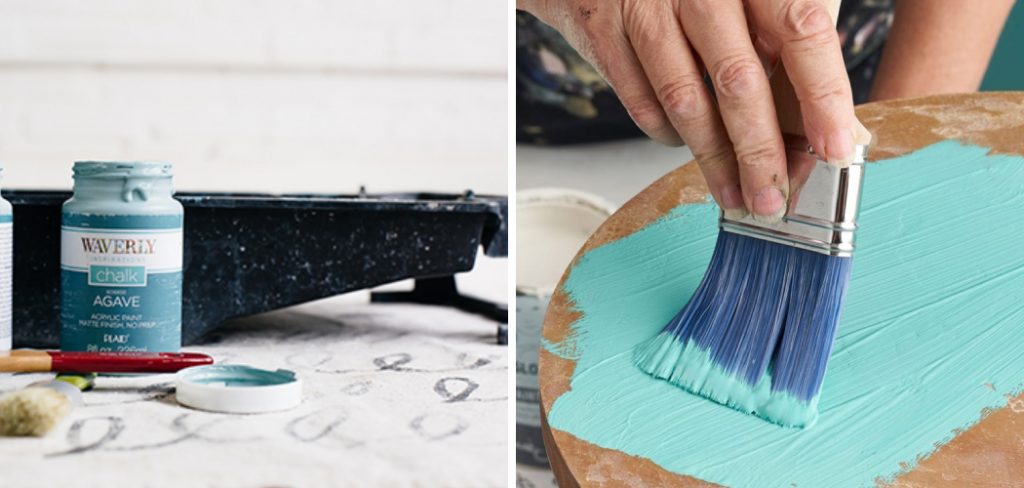
how to apply Waverly Clear Wax is a straightforward process that can help you achieve a beautiful, long-lasting finish on your furniture and decor projects. This wax not only protects the painted surface but also enhances the color and texture, giving it a professional, polished look. Whether you are a novice or a seasoned DIY enthusiast, the following steps will guide you through the process of applying Waverly Clear Wax effectively and efficiently.
By following these instructions, you’ll be able to ensure that your projects possess both the durability and aesthetic appeal that you desire.
What Will You Need?
To apply Waverly Clear Wax, you’ll need the following materials:
- Waverly Clear Wax
- A clean, lint-free cloth or wax brush
- Your painted piece of furniture or decor item
Once you have gathered all the necessary materials, you are ready to begin the application process.
10 Easy Steps on How to Apply Waverly Clear Wax
Step 1: Prepare Your Painted Piece
Before you start applying Waverly Clear Wax, it’s important to ensure that your painted piece is clean and dry. Begin by inspecting the surface for any dust, dirt, or debris, as these can interfere with the wax application and result in an uneven finish. If necessary, use a damp cloth to gently wipe down the surface, removing any particulate matter.
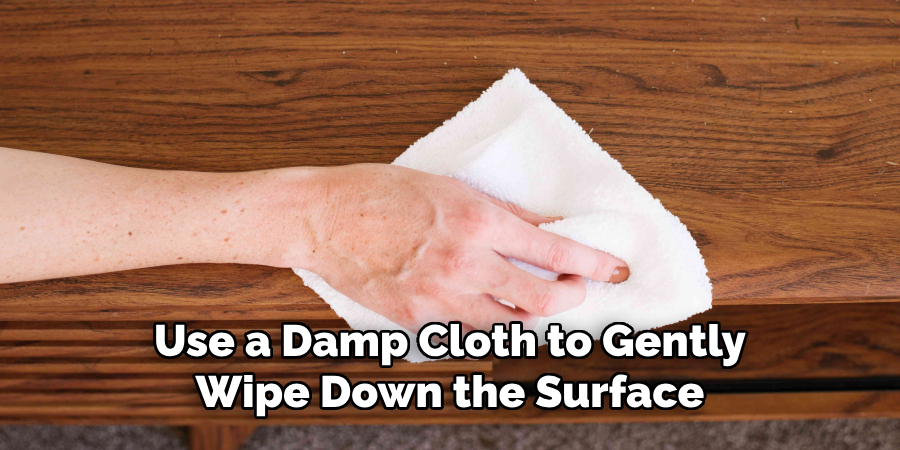
Allow the surface to dry completely before proceeding to the next step. This will give you a smooth, clean base for the wax, enhancing its ability to adhere properly and provide an even, consistent finish. Preparing your painted piece thoroughly sets the foundation for a successful and professional-looking waxing process.
Step 2: Choose Your Applicator
Select a clean, lint-free cloth or a dedicated wax brush to apply the wax. Each applicator has its own benefits: a cloth can offer a smoother, more controlled application, while a brush allows the wax to reach into crevices and detailed areas. Choose the tool that best suits your project’s needs.
Step 3: Apply the Wax
Dip your cloth or brush into the Waverly Clear Wax and begin applying it to the surface of your painted piece. Start with a small amount of wax and work in small sections to ensure even coverage. Use circular or back-and-forth motions to spread the wax, making sure to work it into the surface thoroughly.
Step 4: Buff the Surface
After applying the wax, allow it to sit for a few minutes to begin drying. Then, take a clean, dry cloth and gently buff the surface. Buffing helps to remove any excess wax and bring out a subtle sheen, contributing to the professional look of the finish.
If you desire a more durable or glossier finish, consider applying an additional coat of wax. Allow the first coat to dry completely (approximately 24 hours) before repeating the application process. Multiple thin coats are more effective than a single thick coat.

Step 5: Let the Wax Cure
Once you have completed the application process, allow the wax to cure fully. This may take up to 7 days, during which time the piece should be kept in a dust-free environment. To ensure the best results, avoid heavy use or placing items on the newly waxed surface during this period.
Step 6: Final Buffing
After the wax has fully cured, it’s time to perform the final buffing to achieve a beautifully polished finish. Use a clean, lint-free cloth to gently buff the surface in circular motions. This step enhances the sheen and smoothness of your piece, giving it a professional quality.
The final buffing not only improves the aesthetic appeal but also ensures that the wax is evenly distributed and has bonded well with the painted surface. With each gentle stroke, you’ll notice the surface becoming more luminous and tactilely pleasing, reflecting the care you put into your work.
Step 7: Regular Maintenance
Regular maintenance is essential to maintaining the beauty and durability of your waxed piece. Periodically dust your furniture with a soft cloth to keep the surface clean. For more stubborn dirt or smudges, lightly moisten the cloth with water and gently wipe the area. Avoid using harsh chemicals or abrasive cleaners, as they can damage the wax finish. If you notice areas where the wax has worn away over time, simply reapply a thin coat of Waverly Clear Wax following the steps outlined above.
Step 8: Protection from Elemental Damage
Keep your waxed furniture away from direct sunlight, moisture, and extreme temperatures. Prolonged exposure to sunlight can cause the wax to melt or the paint to fade. Moisture and temperature fluctuations can lead to peeling or cracking. By placing your piece in a stable, controlled environment, you can preserve its finish and prolong its lifespan.
Step 9: Enhancing and Restoring the Finish
Over time, you may wish to enhance or restore the finish of your waxed piece. To bolster the sheen or refresh the surface, you can apply a light coat of Waverly Clear Wax once or twice a year, depending on the level of wear. Follow the same application and buffing procedures to rejuvenate the look of your furniture, ensuring it remains as stunning as the day you first waxed it.
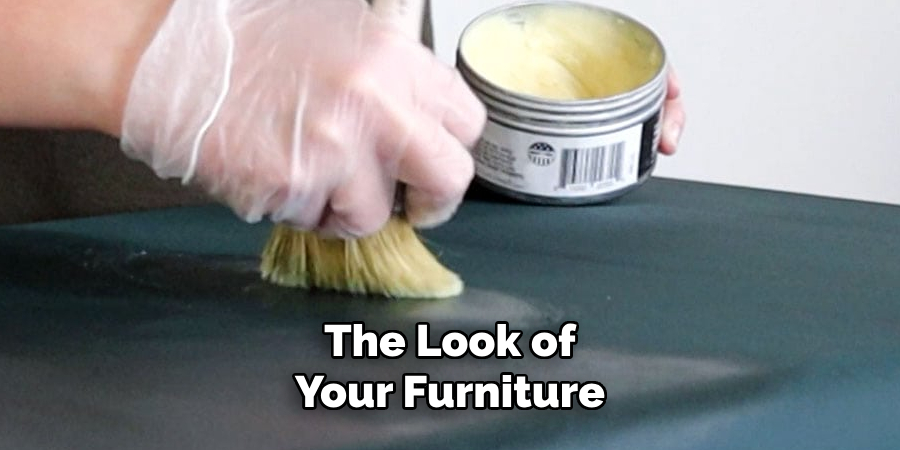
Step 10: Enjoy Your Handiwork
Now that you’ve completed the waxing process step back and admire your handiwork. Your painted piece should now boast a rich, elegant finish that enhances both its appearance and durability. Whether it’s a cherished heirloom or a new DIY project, your waxed furniture is ready to be enjoyed and admired for years to come. This final step celebrates your effort and attention to detail, encapsulating the satisfaction that comes from transforming a simple object into a work of art.
By diligently following these steps, you can ensure that your furniture and decor items retain their beauty and function, providing you with long-lasting satisfaction and pride in your creations.
5 Additional Tips and Tricks
- Surface Preparation: Ensure the surface is clean, dry, and free of any dust or debris. This will help the wax adhere better and result in a smoother finish.
- Use a Soft Cloth: Apply the wax with a soft, lint-free cloth to avoid leaving any fibers behind. A microfiber cloth works well for this purpose.
- Apply in Thin Layers: Rather than globbing on a thick layer of wax, build up the finish with multiple thin coats. This helps avoid streaks and ensures even coverage.
- Buff Between Coats: After each coat of clear wax, lightly buff the surface with a clean, dry cloth. This creates a smooth, polished finish and helps blend any imperfections.
- Check for Compatibility: Before applying any wax, make sure it is compatible with the type of finish on your furniture. Some waxes may not work well with certain finishes or can even damage them.
With these additional tips and tricks, you can achieve a professional-looking finish when using wax on your furniture.
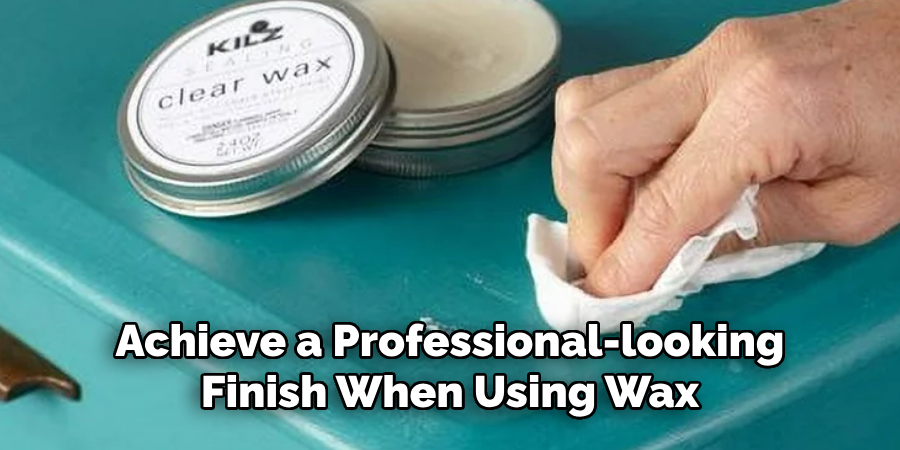
5 Things You Should Avoid
- Skipping Surface Preparation: Never skip the crucial step of surface preparation. Applying wax on a dirty or wet surface will result in poor adhesion and an uneven finish.
- Using a Rough Cloth: Avoid using a rough cloth or one made of materials that shed fibers. This can leave behind residue and negatively impact the smoothness of the finish.
- Applying Thick Layers: Do not apply thick layers of wax, as this can lead to streaking and a tacky surface. It is better to build up the finish with multiple thin layers for better results.
- Skipping Buffing Between Coats: Failing to buff between coats can result in a dull and uneven finish. Buffing helps to smooth out the wax and blend any imperfections.
- Ignoring Manufacturer’s Instructions: Always follow the manufacturer’s instructions for Waverly clear wax. Ignoring these guidelines can lead to compatibility issues and potential damage to your furniture.
By avoiding these common mistakes, you can ensure a successful and professional-looking finish when using wax on your furniture.
5 Different Ways to Use Wax
- As a Protective Coat: One of the main purposes of wax is to provide a protective coating for furniture. It can help protect against scratches, stains, and water damage.
- To Enhance Wood Grain: Wax can bring out the natural beauty of wood by highlighting its grain and adding depth to the color.
- On Painted Furniture: Wax can be used on painted furniture to give it a smooth, polished finish and make the paint more durable.
- To Distress Furniture, apply wax before painting and rub off the paint in certain areas to create a distressed look.
- For Aging and Antiquing: Wax can also be used to age or antique furniture by applying it in certain areas to create a weathered or vintage look.
There are many creative ways to use wax on your furniture, so don’t be afraid to experiment and see what works best for your desired outcome.
Conclusion
How to apply Waverly Clear Wax can significantly enhance the appearance and durability of your furniture when done correctly.
You can achieve a smooth and even finish by following essential tips like thorough surface preparation, using a soft cloth, and applying multiple thin layers. Buffing between coats and ensuring compatibility with your furniture’s finish further contribute to a professional result. Moreover, avoiding common pitfalls such as skipping surface preparation and ignoring the manufacturer’s instructions will help you avoid issues and ensure long-lasting protection.
Whether you’re looking to protect, enhance, or creatively alter your furniture, Waverly clear wax is a versatile tool that can help you achieve your desired result. Happy waxing!
